Art World
‘Pressures on Directors are Enormous’: Carolyn Christov-Bakargiev on the Future of Museums
An in-depth interview with the star curator as she heads out after more than two decades at the Castello di Rivoli in Turin.
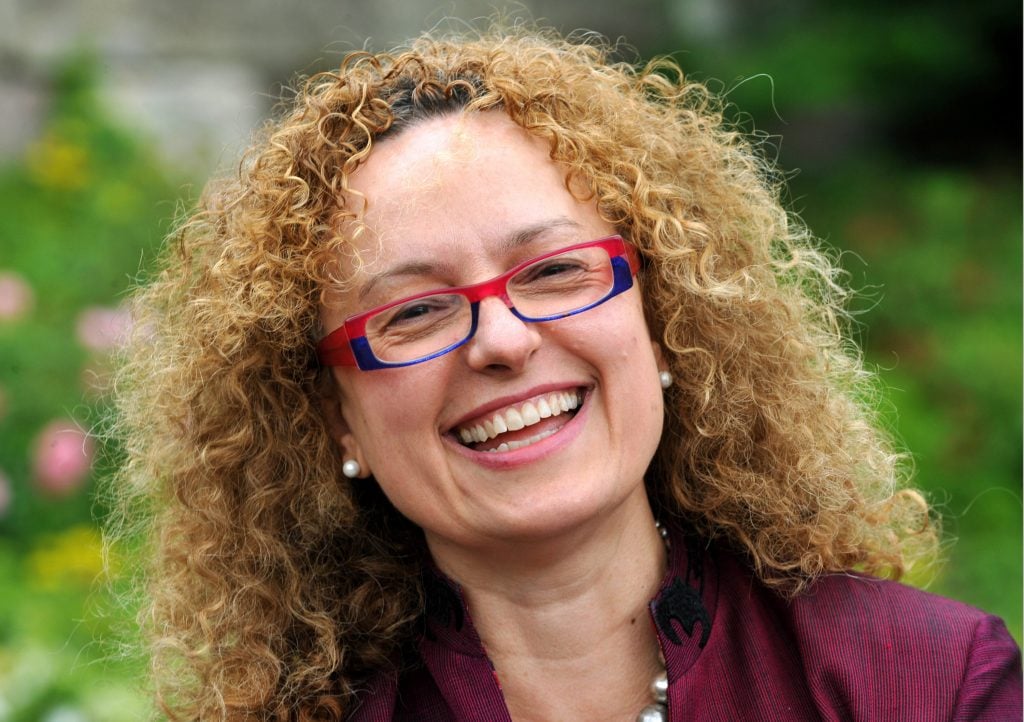
An in-depth interview with the star curator as she heads out after more than two decades at the Castello di Rivoli in Turin.

Devorah Lauter

After leading the Castello di Rivoli Museum of Contemporary Art, Carolyn Christov-Bakargiev’s time at the institution is coming to an end this month.
With Francesco Manacorda succeeding her in the prestigious post as she heads into retirement, Christov-Bakargiev leaves behind a major legacy at the Italian museum where she worked for more than two decades, leading it since 2016. As one of the major powerhouse curators of the European institutional scene, she also curated the trailblazing 2012 edition of Documenta 13, where she broke with tradition and experimented outside conventional art hubs, holding events in Kabul, Alexandria-Cairo, and Banff.
And while Christov-Bakargiev feels that Documenta was “the most significant thing” she did in her life, the list of achievements goes on: running the 2015 Istanbul Biennial, and working as a curator and chief curator at the Villa Medici in Rome, MoMA P.S. 1 in New York, and the 2008 Biennale of Sydney.
All that time, she never stopped maintaining a broad view about what museums can and should be. In 2022, the institution was one of the first to exhibit the work of the NFT breakout art star Beeple; earlier this year, the museum collected a major NFT work by the artist.
“Nobody knows what art is, and neither do I. Art changes its definition constantly,” said the curator. “My way of looking and seeing what artists are relevant is generally: I look at society and situations, in terms of economy, technology, societal questions, and then I look at everything that’s happening in human culture, philosophy, art. film, and literature, and especially in science. I’ll see what is most connected in art to all that, and how. That helps me to identify the artists that are more relevant.”
Unsurprisingly, the 66-year-old may officially be retiring, but she has ambitious plans for the future, including a major exhibition on Arte Povera at Bourse de Commerce in Paris next fall. She shared a trove of personal insights in a staccato stream of consciousness at the elegant Hotel Victoria in Turin in November.
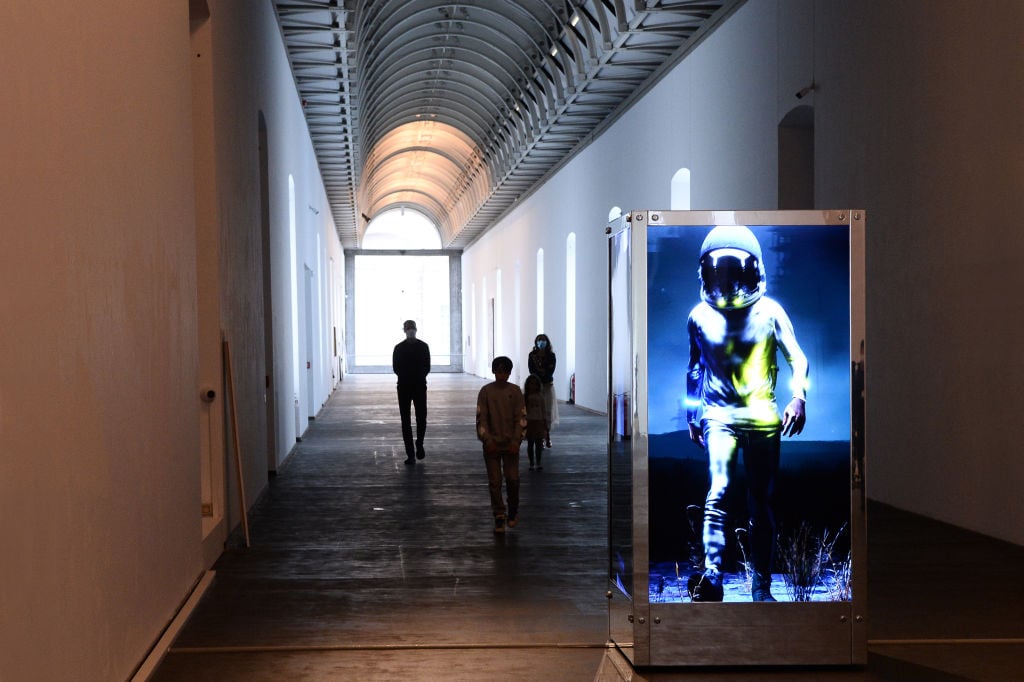
Beeple, Human One installed at Castello di Rivoli. (Photo by Roberto Serra – Iguana Press/Getty Images)
What is next for you?
I didn’t learn that much in university. I mainly learned from the Arte Povera artists. They taught me something which is very much in Mediterranean culture, ever since the pre-Socratic Greeks, which is that nothing is static, everything changes, and is in metamorphosis. There isn’t an artwork that is just there, not even a painting or a sculpture. Everything changes constantly, because of temperature, humidity, light. The artwork exists in a habitat. In the mid-1960s they were among the first artists to make installation art. It’s a form of artwork that says the artwork is not in its materiality, but in its constant vital transformation of energy and traversed by the public. That marked my life.
And the first thing I’m going to do as a young independent curator [laughs], is a big homage to Arte Povera at the Bourse de Commerce Collection Pinault in Paris, with an exhibition opening next fall.
It’s become a trend to highlight overlooked artists, and women who were part of historical movements, but this show doesn’t seem to include many women.
You’re asking me a really hard question, because, yes, there has been a tendency to establish the careers of overlooked women recently, and rightly so, and this exhibition is not part of that. I myself did that, bringing Etel Adnan and Anna Boghiguian into the Documenta 13, or hosting Carol Rama at the GAM in 2016, and many others. Right now I’m doing a lot of work with Bracha Ettinger. She’s a wonderful artist and intellectual. But most of the best women artists from the 1960s from Italy were not Arte Povera. If you don’t make installations, it’s not Arte Povera. The only woman who was active in the Arte Povera group at the time was Marisa Merz. She was a very important artist in my view.
Why were so few women making this art?
I do not know. You can’t invent something that was not there. At the time, the great women artists were either doing something else—like Carol Rama. Or there were many other women before Arte Povera, in the painting school, great artists like Giosetta Fioroni. Or in other fields—a very important artist in body art, was Gina Pane.
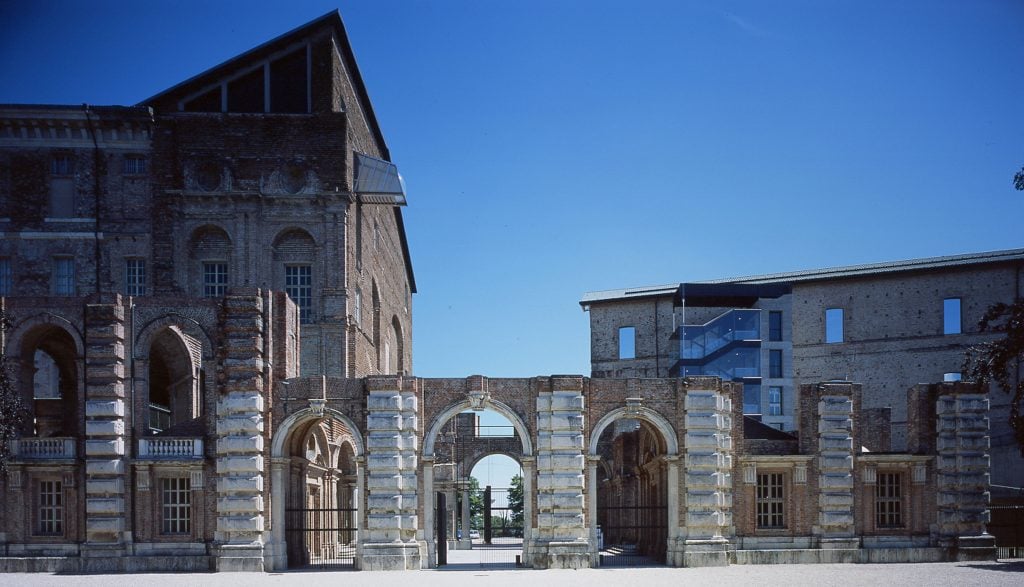
Courtesy Castello di Rivoli Museo d’Arte Contemporanea, Rivoli-Turin.
Was there an invisible wall preventing women from engaging with this movement?
There surely was an invisible wall in the 1960s up to the ’80s. But it’s not true that all the women were not creating art. Why were more women painters than installation artists? Does that mean that making installation art is a more male thing? I don’t think so, there are great women installation artists now. But at that time evidently, that is how things were.
Will you continue working in Italy?
I’ll be between a country house south of Rome and Turin, as well as London and Brussels where my daughters are, and New York.
What I’m most interested in now, is learning more about the digital art world. After the crash of all the NFTs, I’m even more interested in that universe than before. I found out there are a ton of artists working in this field who identify as artists, and that the art world generally rejects. We often cut out of the whole damn thing of human culture, all these people who spend their time in the digital realm, and that is profoundly wrong, a form of retro-thinking.
How do you view the pressures museum directors face today?
The negative pressures on museum directors are enormous. The main one is funding. Private funding is going more into private museums, and that is problematic. It has to do with narcissism. Wanting to be someone. The selfie. So there’s less of a sense of collective good. The business of footfall is also caused by the digital age, because the numbers are not the same as before, and need to be ever higher. [Now] there’s this nutty idea that the museum has to serve masses of people.
One of the things that the museum should offer in the 21st century is slow culture. That means you want 60,000 people a year to come in and spend the entire day, and come out changed, rather than 6 million who walk through while looking at their phones. People who deeply experience museums become less binary—less “I like/I don’t like”, less emoji-style.
If there were qualitative measurements, for example, rather than quantitative ones, that would already make a big difference.
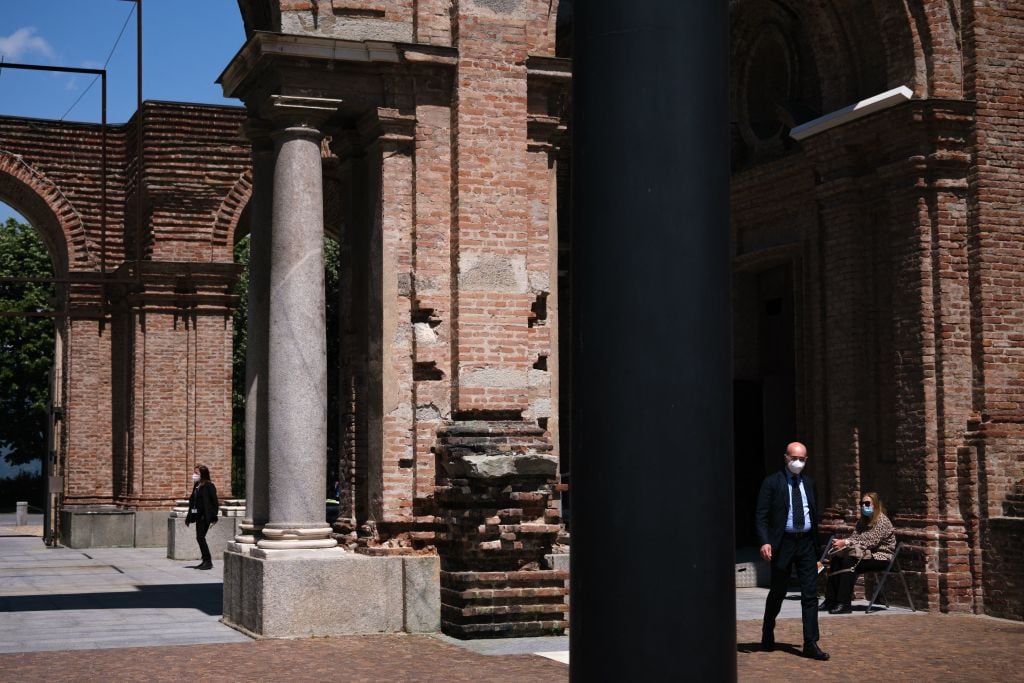
Exterior of the Museum of Contemporary Art “Castello di Rivoli” near Turin. Photo by Marco Bertorello/AFP via Getty Images.
You said you wanted to try saving museums because they are endangered. Can you explain?
They are in a hard position right now, because the public museum, at least in Europe, is funded publicly. Meanwhile, the new wealth in the world, characterized by private museums opening, doesn’t do the scholarly work that the public museums did and they don’t reflect an entire community with all its differences. It’s as if the public museum was getting fragmented, splitting into lots of little pieces because it needs to fundraise so much.
When I saw that the national museum in Rio de Janeiro burned [in 2018] because the director didn’t have the money to change the electrical wiring in the building, I felt it was a catastrophe that really was emblematic of our oligarchic times.
While the public museum is suffering pressures, a private museum such as the Bourse de Commerce Collection Pinault can and does support the making of an Arte Povera show and its legacy today. I am honored and happy to organize this exhibition, after my retirement from the public museum.
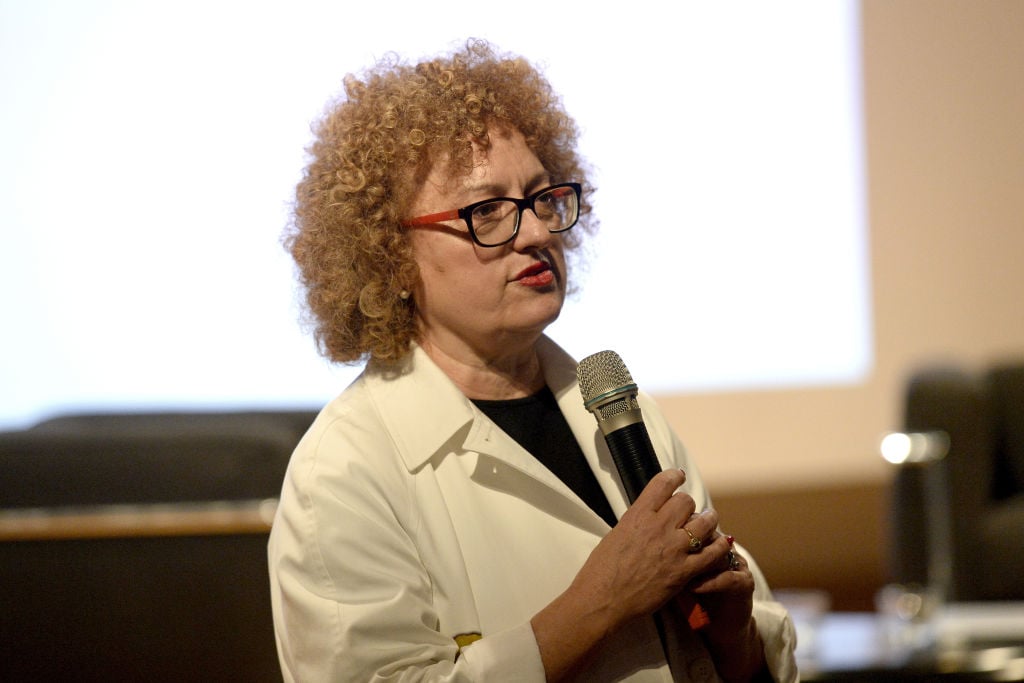
Director of the Castello di Rivoli Museum of Contemporary Art, Carolyn Christov-Bakargiev. Photo by Filippo Alfero/Getty Images for Castello di Rivoli Museo d’Arte Contemporanea.
How would you like to save public museums?
I would like to use some of the new digital wealth of the new technology society. The new wealthy from the digital world are actually more caring of our physical world and cultural heritage than people imagine. I would like to make a foundation that supports physical restoration and repairs of museums and artifacts. I would love to be involved in a project like that, which could give grants every year to museums around the world.
What advice do you have for a new museum director or curator?
The most important thing is that we serve the artists. Their words, their ideas, and their visions are much more important than that of patrons; and more important than the market, galleries, and art historians. Listen to them.
By artists I mean not just the visual artists but also the writers, the scientists—everybody making culture. It’s a question of trust, and being open and vulnerable to that relationship. If that grows, everything else will be more or less okay.
More Trending Stories:
Art Dealers Christina and Emmanuel Di Donna on Their Special Holiday Rituals
Stefanie Heinze Paints Richly Ambiguous Worlds. Collectors Are Obsessed
Inspector Schachter Uncovers Allegations Regarding the Latest Art World Scandal—And It’s a Doozy
Archaeologists Call Foul on the Purported Discovery of a 27,000-Year-Old Pyramid
The Sprawling Legal Dispute Between Yves Bouvier and Dmitry Rybolovlev Is Finally Over